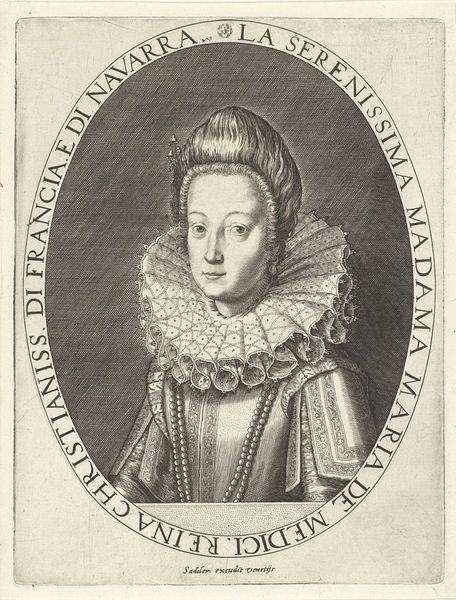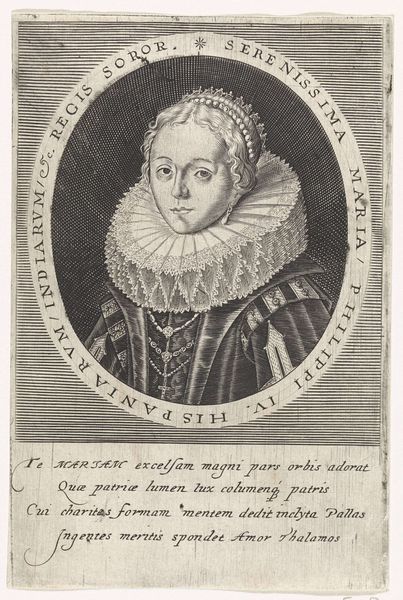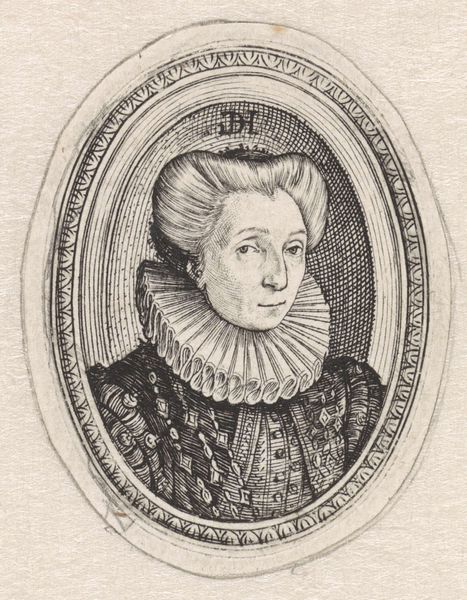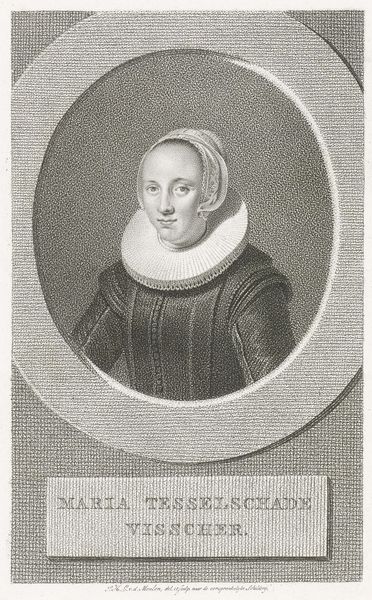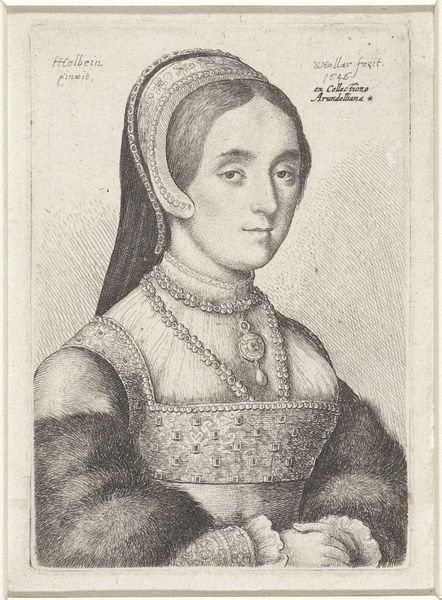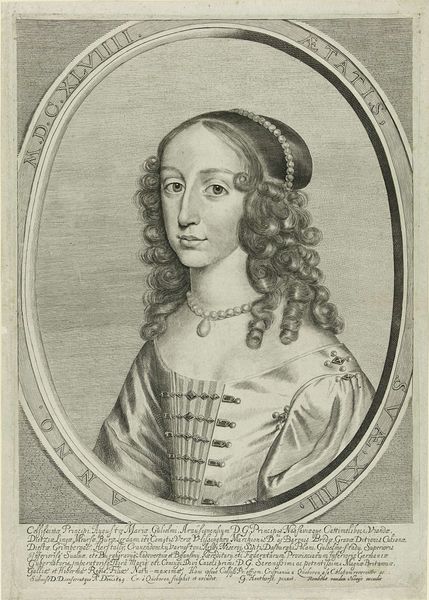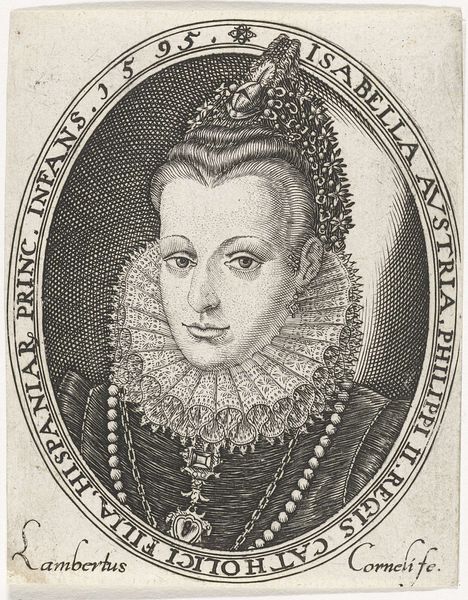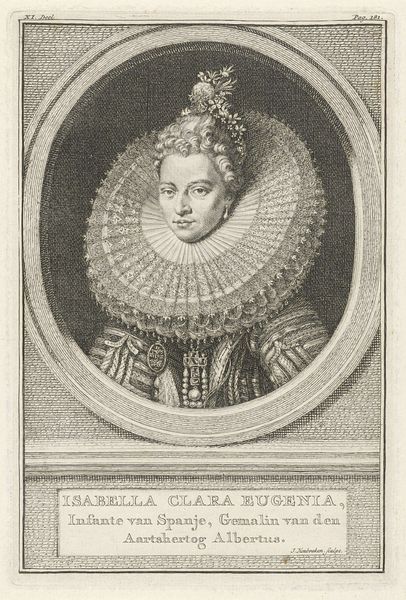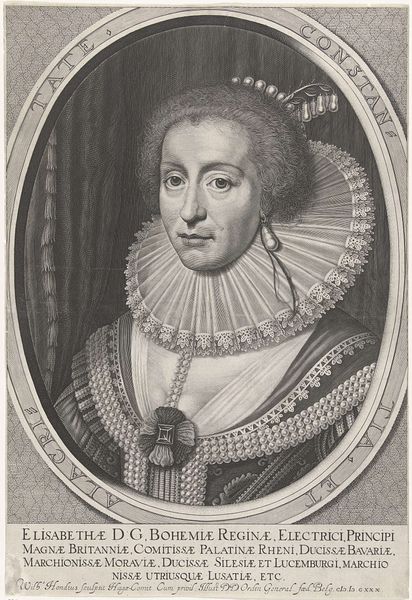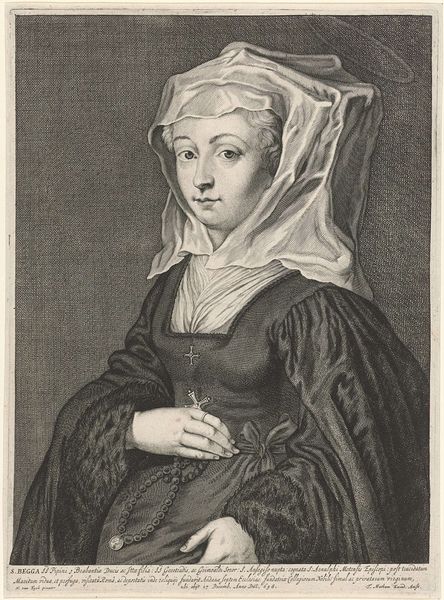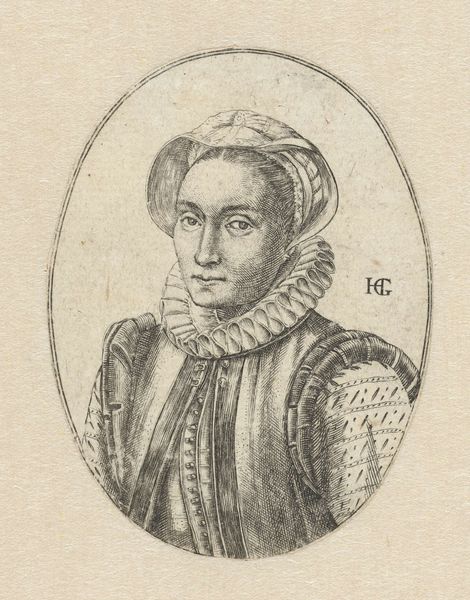
print, engraving
#
portrait
# print
#
mannerism
#
geometric
#
line
#
northern-renaissance
#
engraving
Dimensions: height 160 mm, width 125 mm
Copyright: Rijks Museum: Open Domain
Editor: This engraving by Dominicus Custos, titled "Portret van Renata van Lotharingen", dates somewhere between 1579 and 1615. It’s quite formal and reserved, typical of portraiture, I guess. How would you interpret this work, particularly considering its historical context? Curator: Well, this portrait presents an opportunity to consider the public role of images, especially those depicting women of power. Note the elaborate dress and inscription, which speak to Renata’s status as Duchess of Bavaria. What do you think the function of this print would have been at the time? Editor: To broadcast her status, maybe? Or solidify an image of the family? It seems almost like propaganda now that I think about it. Curator: Exactly. Printmaking allowed for wider circulation of imagery and thus, ideas. These portraits, produced in multiples, were crucial tools in shaping public perception and reinforcing social hierarchies. The very act of creating and distributing such images reflects a carefully constructed narrative around power, lineage, and legitimacy. Editor: So, it's less about capturing an individual likeness and more about crafting a persona for public consumption? Curator: Precisely. The Northern Renaissance portrait wasn't just about appearances; it was a calculated display of authority within the intricate political landscape of the time. Considering this, how does your understanding of the work change? Editor: It makes me see it with a new lens. It isn't simply a portrait; it's a strategic communication tool. I hadn't considered the influence of printmaking in spreading the image of power beyond the noble court. Curator: Indeed. Looking closely at such portraits reminds us how profoundly art is intertwined with power, influencing societal norms. It certainly gives food for thought!
Comments
No comments
Be the first to comment and join the conversation on the ultimate creative platform.

